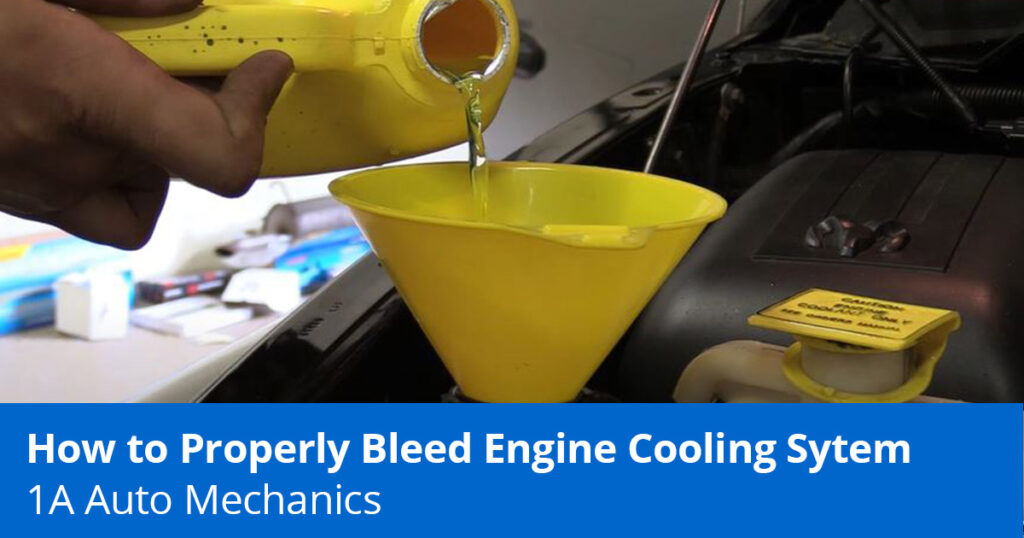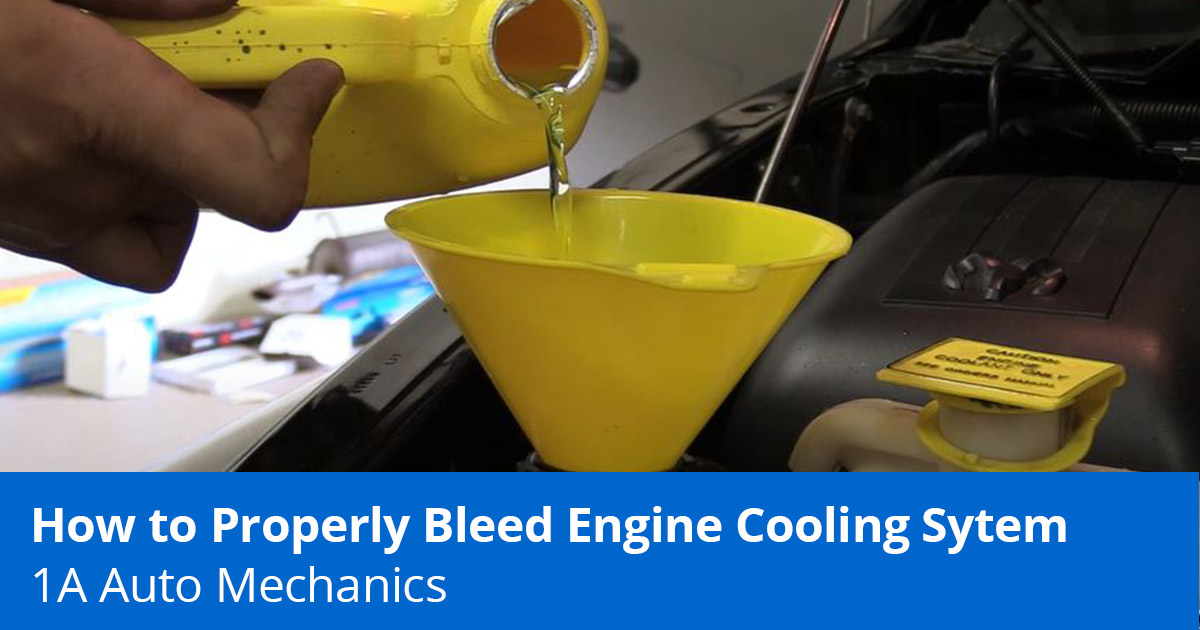
If you recently drained coolant or antifreeze or need to refill the coolant system because it’s below normal levels, bleeding the coolant system will remove air pockets that can form when adding new coolant. Air pockets can prevent the cooling system from working effectively, which can affect other areas of your vehicle like having less interior heat. This post explains how to bleed the coolant system properly to keep air pockets from forming and keep the coolant system performing at its best.

How to Bleed the Cooling System Properly on Most Vehicles
Reasons to Bleed the Cooling System
You want to bleed the cooling system when the radiator or engine block has been drained of coolant or has a fluid level below normal for reasons like a part failing or needing to drain the system to replace one. When refilling the cooling system with new coolant or antifreeze, air pockets can form within the engine block, radiator hoses, radiator, and heater core. Bleeding the cooling system removes any air pockets so the cooling system can work effectively. For example, the heat may not be as warm or work at all if too much air is in the heater core, since there will be less hot coolant emitting heat for the blower motor to push into the cabin.
How to Get Air Out of the Cooling System
Tip: You want to bleed all of the air out of the coolant system before driving your vehicle.
Tip: Do not remove the radiator cap when the system is still warm. The cooling system is pressurized and hot fluid can spray up if the cap is removed with the system warm.
Steps for Bleeding the Cooling System
- Remove the Radiator Cap
Remove the radiator cap with the system cool.
- Insert a Funnel into the Radiator
Place a funnel into the radiator.

- Fill the Radiator with Coolant
Fill the radiator with coolant as full as possible—this may take some time as the level drops and air bubbles pop on their own.
- Start the Vehicle
Once the radiator is full and has coolant remaining at a stable level, start the vehicle.
- Turn the Heat on High and the Fan on Low
Set the heat to the highest setting and the fan to the lowest setting with the airflow adjusted so you can feel air coming out of the vents.
This will allow you the monitor the temperature of the coolant and the heater core and shorten the bleeding process by preventing the heater core from cooling the coolant down too much.
- Top Off the Coolant in the Radiator as the Level Drops
Make sure the coolant level stays topped off in the radiator. With the vehicle running, top off the coolant level in the radiator as it drops. A large amount of coolant will drop into the engine block once the engine reaches operating temperature and the thermostat opens.

- Test the Interior Heat
Feel and confirm enough heat is coming from the vents
- Check the Temperature Gauge
Check the temperature gauge and make sure the engine is in the normal operating temperature range

- Turn the Vehicle Off and Reinstall the Radiator Cap
Once you’ve topped off the radiator, shut the vehicle off and reinstall the radiator cap.
- Test Drive the Vehicle
Let the vehicle run for a few minutes to ensure the operating temperature stays normal and that you don’t lose your heat. Then take the vehicle for a test drive, bring it back, and let it cool down.
- Check the Fluid Level Inside the Radiator Once the Cooling System Is Cool
With the cooling system cool, remove the radiator cap and confirm the radiator is still full.
Fix Cooling and Heating Parts on Your Vehicle with How-to Videos
Fix cooling and heating system parts and more on your own vehicle with the help of our how-to videos that have step-by-step instructions by expert mechanics specific to many makes and models.
Related Content
- The Importance of a Heater Core Flush
- How to Perform a Radiator Pressure Test
- How Can I Tell If I Have a Coolant Leak?
- Common Bad Radiator Symptoms
- How to Remove Radiator Hose [Loosen Stuck Hoses]
- Recycling Waste Fluids and Oils? How to Dispose of Motor Oil, Antifreeze, Brake Fluid, and More
- How to Use an Antifreeze Tester
Shop Heating and Cooling Parts and More
- Heating & Cooling
- Thermostat & Housing
- Radiator
- Radiator Hose
- Overflow Tank
- Heater Core
- A/C and Heater Controls
- Blower Motor


Thank you so much. This is very helpful.